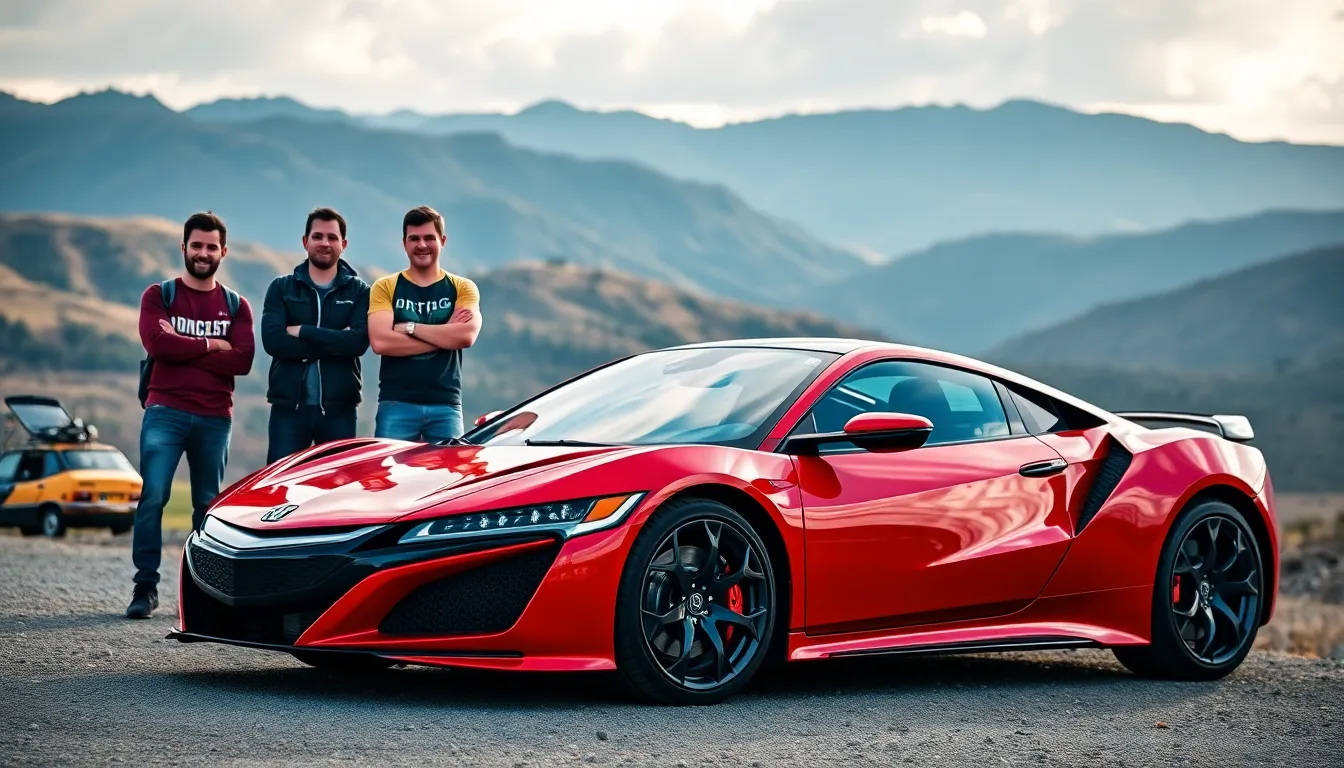JDM cars represent the pinnacle of Japanese automotive engineering and culture that’s captivated enthusiasts worldwide. We’re talking about legendary machines like the Toyota Supra, Nissan Skyline GT-R, and Honda NSX that weren’t originally sold in US markets but have achieved cult status among car lovers.
These iconic vehicles showcase Japan’s commitment to precision engineering performance and innovative technology. From their distinctive styling to their legendary reliability we’ve seen JDM cars dominate racetracks and car meets across America. What makes these cars truly special isn’t just their impressive specs but the passion and craftsmanship that Japanese manufacturers poured into every detail.
We’ll explore everything you need to know about JDM cars including the most sought-after models import regulations and why these vehicles continue to command premium prices decades after their initial release. Whether you’re a seasoned collector or just discovering the JDM scene this guide covers the essentials.
What Are JDM Cars and Why They Matter
Understanding JDM cars requires diving deeper into what makes these vehicles truly special. We’ll explore the fundamental aspects that set these Japanese machines apart from their international counterparts.
Definition of Japanese Domestic Market Vehicles
Japanese Domestic Market (JDM) cars are vehicles specifically manufactured and sold exclusively within Japan’s domestic automotive market. These cars never received official export status to other countries during their original production runs. Manufacturers like Toyota, Honda, Nissan, Mazda, and Subaru created these models with Japanese regulations, preferences, and driving conditions in mind.
Original JDM specifications often differed significantly from their international versions. Engine configurations, suspension tuning, interior features, and even exterior styling elements were customized specifically for Japanese consumers. Many of these vehicles featured advanced technology years before similar innovations appeared in global markets.
True JDM cars must meet Japan’s stringent Shaken inspection system requirements. This mandatory vehicle inspection process influenced everything from emission standards to safety features. Cars that passed these rigorous standards often exceeded international automotive benchmarks of their era.
Key Characteristics That Define JDM Cars
Right-hand drive configuration stands as the most immediately recognizable JDM characteristic. Japan drives on the left side of the road, requiring steering wheels positioned on the vehicle’s right side. This configuration often surprises American enthusiasts experiencing authentic JDM cars for the first time.
Advanced technology integration typically appeared in JDM models years before worldwide releases. Features like all-wheel drive systems, turbocharging, active suspension, and sophisticated engine management systems debuted in domestic Japanese models. The Nissan Skyline GT-R’s ATTESA-ETS all-wheel drive system and Super-HICAS four-wheel steering exemplify this technological advancement.
Performance-focused engineering prioritized handling precision over straight-line speed. Japanese mountain roads and tight city streets influenced chassis tuning, suspension geometry, and power delivery characteristics. Manufacturers optimized these cars for technical driving rather than highway cruising.
Build quality and reliability standards exceeded most international automotive benchmarks. Japanese manufacturing processes emphasized precision assembly, quality materials, and extensive testing protocols. These standards resulted in vehicles that maintained performance and reliability well beyond typical automotive lifespans.
The Cultural Significance Behind JDM
JDM cars represent Japan’s automotive golden age spanning the 1980s through early 2000s. This period coincided with Japan’s economic boom, allowing manufacturers to invest heavily in research, development, and performance innovations. Cars from this era showcase Japanese engineering at its creative and technological peak.
Street racing culture and motorsports heavily influenced JDM development. Japan’s touge (mountain pass) racing scene and participation in international racing series like Group A touring cars shaped vehicle characteristics. Manufacturers developed homologation specials and performance variants specifically for these competitive environments.
Anime, video games, and pop culture elevated JDM cars to iconic status globally. Media franchises like Initial D, Gran Turismo, and various anime series introduced international audiences to Japanese car culture. These cultural exports created demand and appreciation for JDM vehicles worldwide.
Collector status and investment potential continue driving JDM car values upward. Limited production numbers, advancing age, and growing international recognition have transformed many JDM cars into appreciating assets. Models like the Toyota Supra RZ, Honda NSX Type-R, and Nissan Skyline GT-R command premium prices in today’s collector car market.
Honda NSX: The Supercar That Changed Everything
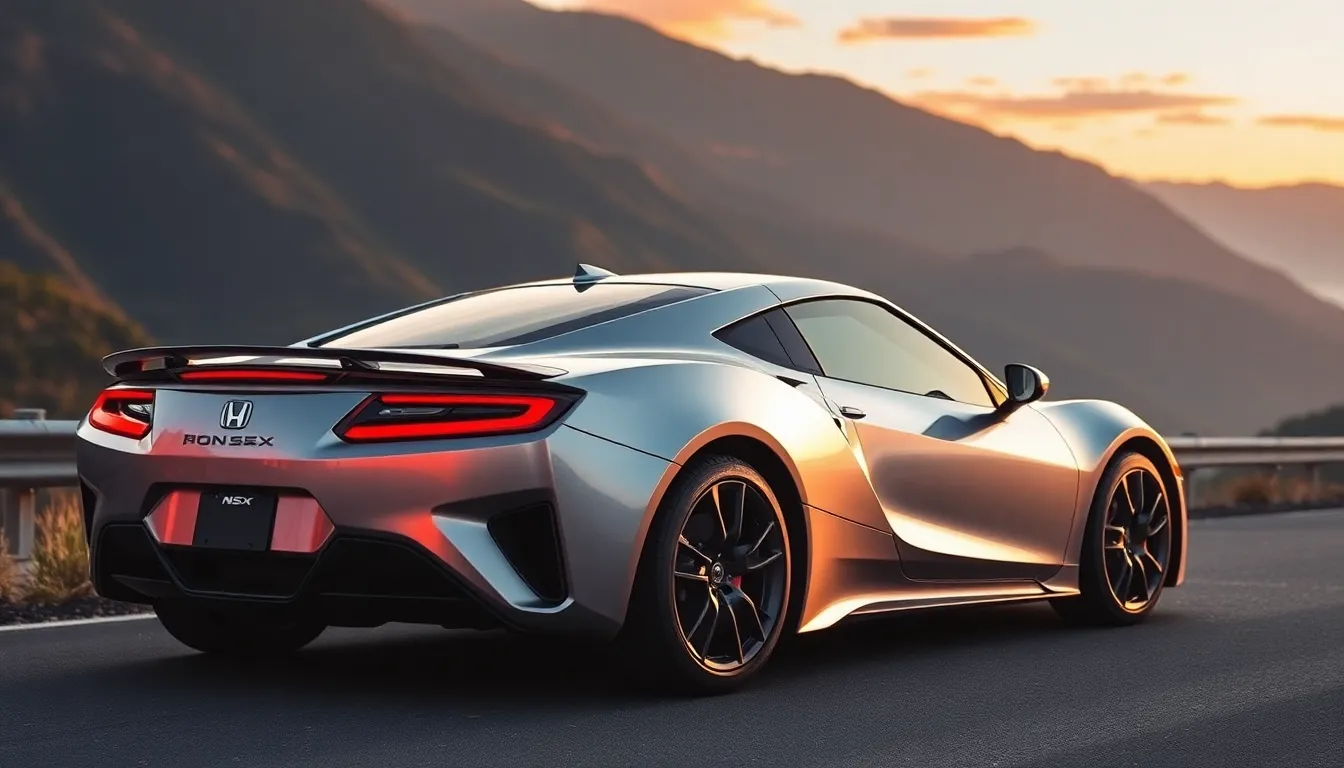
Honda’s NSX stands as Japan’s first true supercar and fundamentally altered global perceptions of Japanese automotive capabilities. This mid-engine marvel demonstrated that Japanese manufacturers could compete directly with Ferrari and Porsche.
Revolutionary Mid-Engine Design and Performance
Mid-engine architecture defines the NSX’s groundbreaking approach to supercar construction. Honda positioned the 3.0L or 3.2L VTEC V6 engine behind the driver for optimal weight distribution and handling dynamics. This configuration delivered 270-290 horsepower while maintaining exceptional balance through corners.
Aluminum monocoque construction revolutionized supercar manufacturing when Honda introduced it in 1990. The NSX became the first production car to use an all-aluminum body and space frame, reducing weight by 440 pounds compared to traditional steel construction. Ferrari and other European manufacturers quickly adopted similar aluminum techniques after witnessing Honda’s success.
VTEC technology brought variable valve timing to the supercar segment for the first time. Honda’s Variable Valve Timing and Lift Electronic Control system allowed the NSX to produce linear power delivery while maintaining reliability and fuel efficiency. Racing legend Ayrton Senna helped fine-tune the NSX’s handling characteristics during development, ensuring track-worthy performance.
Daily usability separated the NSX from temperamental European supercars of the era. Honda engineered the NSX to start reliably, require minimal maintenance, and provide comfortable driving experiences during regular commutes. Air conditioning, power steering, and user-friendly controls made exotic car ownership accessible to a broader audience.
Impact on Japanese Automotive Industry
Global credibility transformed how the industry viewed Japanese sports cars after the NSX’s debut. European manufacturers could no longer dismiss Japanese engineering as inferior, with the NSX proving that Japan could create industry-class supercars. Porsche, Ferrari, and Lamborghini began studying Honda’s manufacturing techniques and design philosophies.
Engineering standards elevated across all Japanese manufacturers following the NSX’s success. Toyota responded with the Supra Turbo, while Nissan developed the Skyline GT-R to compete in the performance arena. Mazda introduced the RX-7 with more aggressive styling and turbocharged power, creating the golden age of JDM sports cars.
Manufacturing innovation spread throughout Honda’s entire lineup after NSX development. Aluminum construction techniques, VTEC technology, and precision assembly methods improved quality across Civic, Accord, and other mainstream models. Honda’s reputation for reliability and performance engineering solidified during this period.
Export market expansion accelerated as Honda leveraged NSX prestige to enter luxury segments worldwide. Acura branding gained credibility through NSX association, helping Honda compete against BMW, Mercedes-Benz, and Lexus in premium markets. International racing programs showcased Japanese engineering capabilities on global stages.
Modern Legacy and Collectibility
Market appreciation has driven NSX values dramatically upward over the past decade. Early 1991-1994 models now command $80,000-$120,000, while pristine examples exceed $150,000 at auction. Limited production of approximately 18,685 units worldwide creates scarcity that collectors increasingly recognize.
Investment potential positions the NSX among the most stable appreciating JDM vehicles. Clean title examples with maintenance records show consistent 8-12% annual appreciation, outperforming many traditional investment vehicles. Rare variants like the NSX-R or Zanardi Edition command premium pricing exceeding $200,000.
Restoration market supports NSX ownership through specialized parts availability and expert service networks. Honda continues manufacturing critical components, while aftermarket companies provide performance upgrades and cosmetic enhancements. Professional NSX specialists maintain expertise in these complex vehicles across major metropolitan areas.
Cultural influence extends through video games, movies, and automotive media featuring the NSX prominently. Gran Turismo, Need for Speed, and other racing games introduced younger generations to NSX performance. Hollywood films and automotive journalism continue celebrating the NSX as Japan’s definitive supercar achievement.
Toyota Supra: The Legendary Sports Car Icon
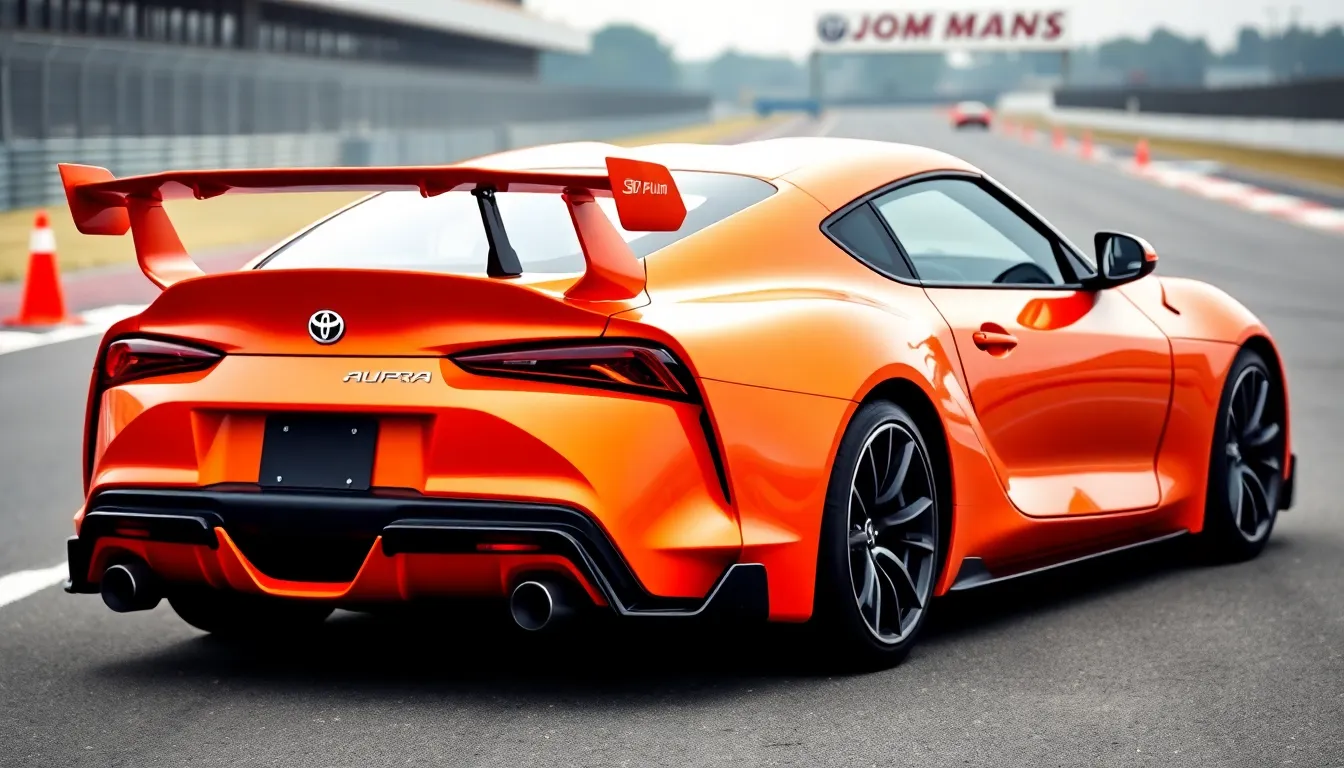
The Toyota Supra stands as perhaps the most recognizable name in JDM culture, earning its legendary status through decades of performance innovation and cultural impact. Built on Toyota’s commitment to engineering excellence, the Supra transformed from a Celica variant into an independent sports car icon that continues to captivate enthusiasts worldwide.
Fourth Generation A80 Dominance
Power and performance reached new heights with the fourth generation A80 Supra, produced from 1993 to 2002. Toyota equipped this model with the legendary 2JZ-GTE twin-turbocharged inline-six engine, delivering 276 horsepower in its Japanese market configuration.
Engineering excellence defined every aspect of the A80’s design, featuring a cast iron block that could handle extreme power modifications. The 2JZ engine became synonymous with reliability and strength, earning respect from tuners and manufacturers alike.
Sequential turbocharging technology set the A80 apart from its competitors, providing smooth power delivery across the entire RPM range. This innovative system eliminated turbo lag while maintaining impressive top-end performance capabilities.
Track-focused variants like the RZ model offered purists a more captivating driving experience with manual transmissions and sport-tuned suspensions. These lightweight versions deleted unnecessary comfort features to prioritize performance and handling dynamics.
Tuning Potential and Aftermarket Support
Modification capabilities of the 2JZ-GTE engine have made the Supra a tuner’s dream, with stock internals capable of handling 500-600 horsepower safely. Professional builders routinely extract over 1,000 horsepower from heavily modified examples using aftermarket turbochargers and engine management systems.
Aftermarket support remains unmatched in the JDM industry, with companies like HKS, Greddy, and Spoon Sports developing comprehensive performance packages. These manufacturers continue producing parts decades after production ended, ensuring Supra owners can maintain and modify their vehicles.
Single turbo conversions represent popular modifications, eliminating the complex sequential setup for simplified tuning and increased power potential. These conversions often use larger single turbochargers that can produce significantly more boost pressure than the factory twin-turbo arrangement.
Suspension and chassis modifications transform the Supra’s handling characteristics, with coilover systems and chassis bracing addressing the car’s weight distribution challenges. Popular upgrades include adjustable suspension arms, strut tower braces, and roll cage installations for serious track applications.
Hollywood Fame and Pop Culture Status
Fast and Furious franchise catapulted the Supra into mainstream consciousness, featuring Paul Walker’s orange A80 as a central character in the original 2001 film. This exposure introduced millions of viewers to JDM culture and sparked international demand for authentic Japanese sports cars.
Video game appearances spanning decades have kept the Supra relevant across multiple generations of enthusiasts. Games like Gran Turismo, Need for Speed, and Forza Motorsport feature detailed Supra models, allowing players to experience the car’s performance virtually.
Collectible status continues rising as pristine examples command six-figure prices at auction, with low-mileage Turbo models reaching $200,000 or more. This appreciation reflects the Supra’s cultural significance and limited availability in global markets.
Media representation extends beyond automotive publications into mainstream entertainment, with the Supra appearing in countless films, television shows, and music videos. These appearances have cemented its position as a cultural icon that transcends traditional automotive enthusiasm boundaries.
Nissan Skyline GT-R: The Godzilla of JDM Cars
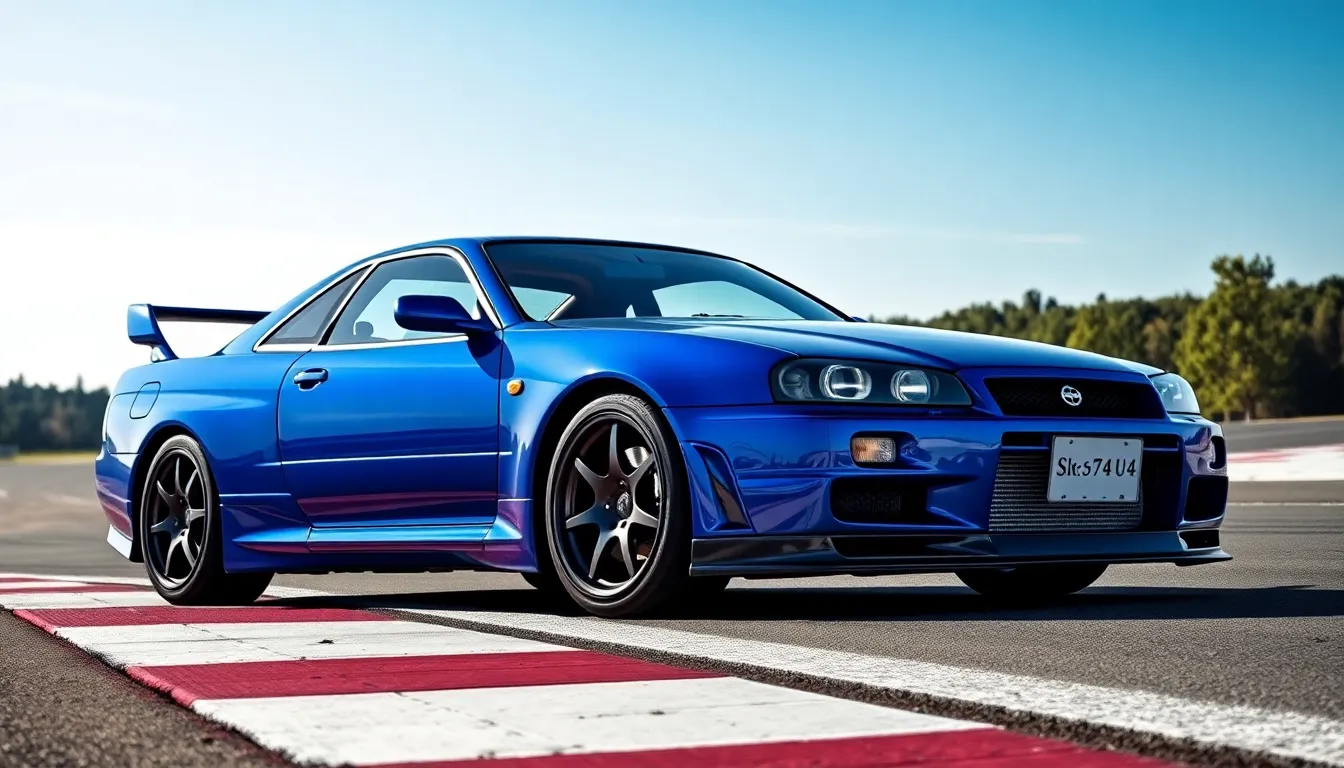
The Nissan Skyline GT-R earned its fearsome “Godzilla” nickname through dominating performance that struck terror into competitors on both street and track. We’ll explore the engineering marvel that transformed this legendary model into Japan’s ultimate performance machine.
R32, R33, and R34 Generation Breakdown
R32 Generation (1989-1994) revolutionized the sports car industry with its groundbreaking ATTESA E-TS all-wheel drive system and advanced electronics. This generation featured the legendary RB26DETT twin-turbo inline-six engine producing 276 horsepower, though actual output often exceeded 300 horsepower. Weight distribution of 60/40 front to rear provided exceptional handling balance that set new performance standards.
R33 Generation (1995-1998) expanded the platform with a longer wheelbase and refined aerodynamics while maintaining the proven RB26DETT powerplant. Engineers increased body rigidity by 20% compared to the R32, resulting in improved chassis dynamics and stability at high speeds. Advanced features included Super HICAS four-wheel steering and updated ATTESA E-TS Pro system for enhanced traction management.
R34 Generation (1999-2002) represented the pinnacle of Skyline GT-R evolution with sophisticated electronic systems and aerodynamic refinements. This final generation introduced the Multi Function Display (MFD) that monitored real-time performance data including turbo pressure, oil temperature, and G-forces. Production numbers remained limited with approximately 11,577 R34 units manufactured across all variants.
| Generation | Production Years | Engine | Power Output | Weight |
|---|---|---|---|---|
| R32 | 1989-1994 | RB26DETT | 276 hp | 3,263 lbs |
| R33 | 1995-1998 | RB26DETT | 276 hp | 3,439 lbs |
| R34 | 1999-2002 | RB26DETT | 276 hp | 3,483 lbs |
Advanced All-Wheel Drive Technology
ATTESA E-TS (Advanced Total Traction Engineering System for All-Terrain) represented a quantum leap in drivetrain technology when Nissan introduced it in 1989. This system utilized electronic sensors to monitor wheel slip, throttle position, and steering angle to distribute power between front and rear axles with millisecond precision. Under normal driving conditions, 100% of power routes to the rear wheels, maintaining the traditional rear-wheel drive feel that enthusiasts craved.
Torque distribution automatically shifts when sensors detect slip conditions, sending up to 50% of engine torque to the front wheels through a computer-controlled transfer case. This technology predated many modern AWD systems by decades and provided the GT-R with exceptional grip in various weather conditions. Electronic differential locks on both front and rear axles further enhanced traction control by preventing individual wheels from spinning freely.
Performance benefits of the ATTESA system became immediately apparent during acceleration, cornering, and braking scenarios. Launch times improved dramatically with 0-60 mph times consistently achieving sub-5-second results across all three generations. Cornering capabilities surpassed traditional rear-wheel drive sports cars while maintaining predictable handling characteristics that drivers could exploit with confidence.
Racing Heritage and Track Success
Group A racing dominance established the Skyline GT-R’s legendary status when it claimed victory in 29 consecutive races in the Japanese Touring Car Championship between 1990 and 1993. This unprecedented winning streak forced competitors to develop entirely new strategies and technologies just to remain competitive. International success followed with victories at Bathurst 1000 and various European touring car championships.
Nürburgring achievements solidified the GT-R’s reputation on the industry’s most demanding race track, with the R34 setting a production car lap record of 7:59 in 2002. This sub-8-minute time shocked the automotive industry and proved that Japanese engineering could match or exceed European supercars costing twice the price. Professional drivers praised the GT-R’s consistent lap times and reliability during extended track sessions.
Motorsport technology transfer directly benefited production models through lessons learned in competitive racing environments. Advanced cooling systems, reinforced chassis components, and suspension geometries developed for racing found their way into street versions. This direct connection between track success and production capability reinforced the GT-R’s credibility among performance enthusiasts worldwide.
Professional racing teams continue using GT-R platforms in various motorsport categories including Super GT, IMSA, and grassroots racing series. Modern GT-R race cars maintain the philosophical connection to their JDM predecessors while incorporating contemporary safety and performance technologies. These ongoing racing programs ensure the Godzilla legacy remains relevant in today’s competitive motorsport industry.
Mazda RX-7: The Rotary Engine Marvel
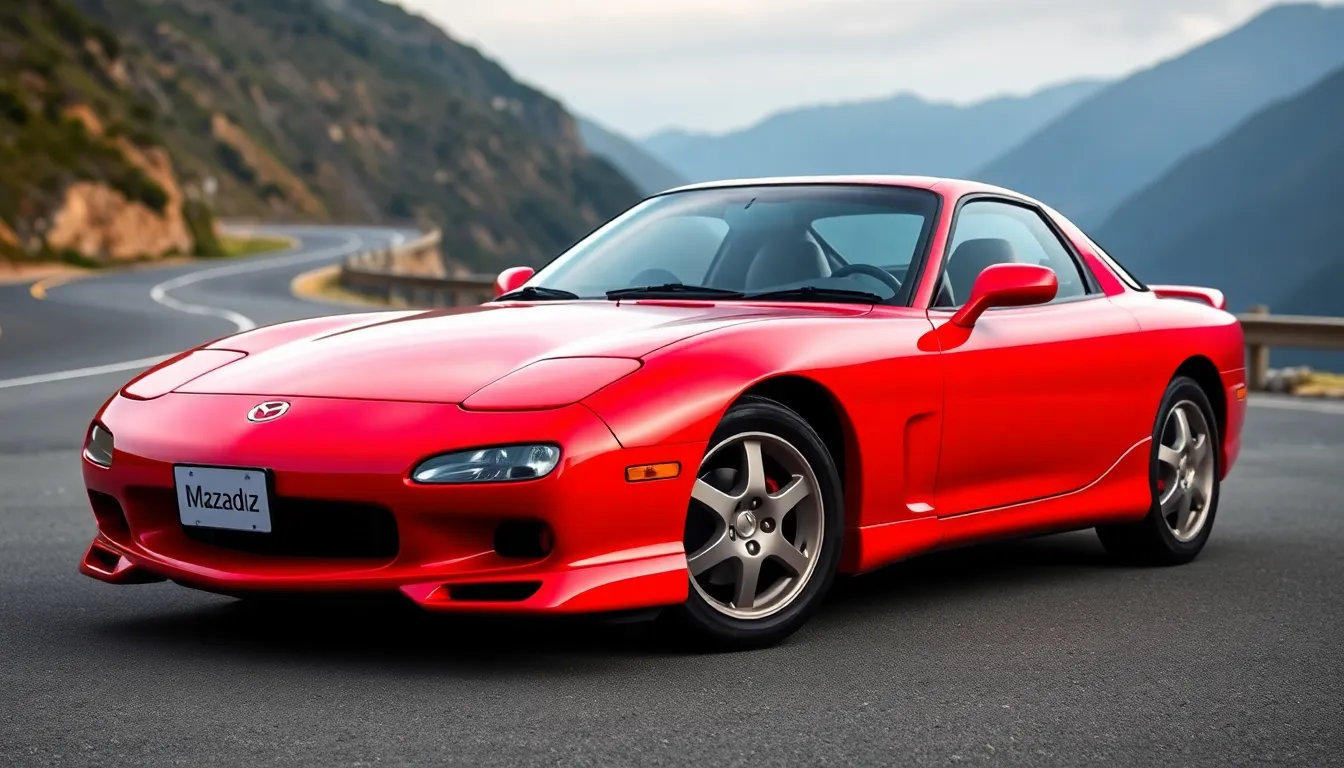
The Mazda RX-7 stands as one of the most distinctive JDM sports cars ever created, powered by a revolutionary rotary engine that set it apart from every other vehicle in its class.
Unique Wankel Rotary Engine Technology
Rotary engines define the RX-7’s character through their triangular rotor design that eliminates traditional pistons entirely. Instead of reciprocating motion, the Wankel engine creates power through rotors that spin smoothly within specially shaped chambers. This design produces exceptionally smooth power delivery with minimal vibration compared to conventional piston engines.
Weight advantages become immediately apparent when comparing rotary engines to traditional powerplants of similar output. A typical RX-7’s 13B rotary engine weighs approximately 300 pounds less than equivalent V8 engines while occupying significantly less space under the hood. Power to weight ratios benefit tremendously from this compact design, allowing the RX-7 to achieve remarkable performance figures even though relatively modest displacement numbers.
Rev limits reach extraordinary heights in rotary engines, with many RX-7 models capable of spinning to 9,000 RPM or higher without internal damage. These engines produce their peak power at high RPM ranges, creating a unique driving experience that rewards aggressive throttle application. Sound characteristics differ markedly from piston engines, generating a distinctive high pitched wail that RX-7 enthusiasts consider part of the car’s soul.
Three Generations of Evolution
First generation FB RX-7 models launched in 1978 and established the foundation for all future iterations through their lightweight construction and balanced chassis design. These early cars featured the naturally aspirated 12A rotary engine producing 100 horsepower, which provided adequate performance for the era. Styling cues borrowed from Porsche’s 924 gave the FB generation timeless proportions that remain attractive today.
Second generation FC models arrived in 1985 with significantly improved aerodynamics and more sophisticated suspension systems. Turbocharging became available on certain FC variants, boosting power output to 182 horsepower and transforming the RX-7 into a serious performance contender. Pop up headlights became a signature design element during this generation, contributing to the car’s sleek nighttime appearance.
Third generation FD models debuted in 1992 as the ultimate expression of rotary powered sports car engineering. Twin sequential turbochargers equipped the 13B-REW engine, producing 255 horsepower in Japanese specification and delivering explosive acceleration throughout the rev range. Body styling reached new levels of sophistication with flowing curves and integrated aerodynamic elements that remain stunning three decades later.
Lightweight Design Philosophy
Aluminum components replace steel throughout the RX-7’s construction wherever possible, contributing to exceptional weight distribution and handling characteristics. Hood panels, suspension components, and various brackets use aluminum construction to minimize unsprung weight. These material choices help maintain the RX-7’s reputation as one of the best handling sports cars ever produced.
Weight distribution achieves near perfect 50/50 balance through careful component placement and the compact rotary engine’s low hood placement. Front and rear weight distribution creates neutral handling characteristics that inspire driver confidence in challenging driving situations. Corner entry speeds remain remarkably high due to this balanced weight distribution and relatively low overall curb weight.
Performance benefits multiply when lightweight construction combines with the rotary engine’s compact dimensions and high rev capabilities. Acceleration figures impress even though modest displacement numbers, with FD generation models achieving 0-60 mph times under 5 seconds. Braking distances shrink considerably compared to heavier sports cars, while change of direction abilities rival much more expensive exotic vehicles.
Mitsubishi Lancer Evolution: Rally-Bred Performance
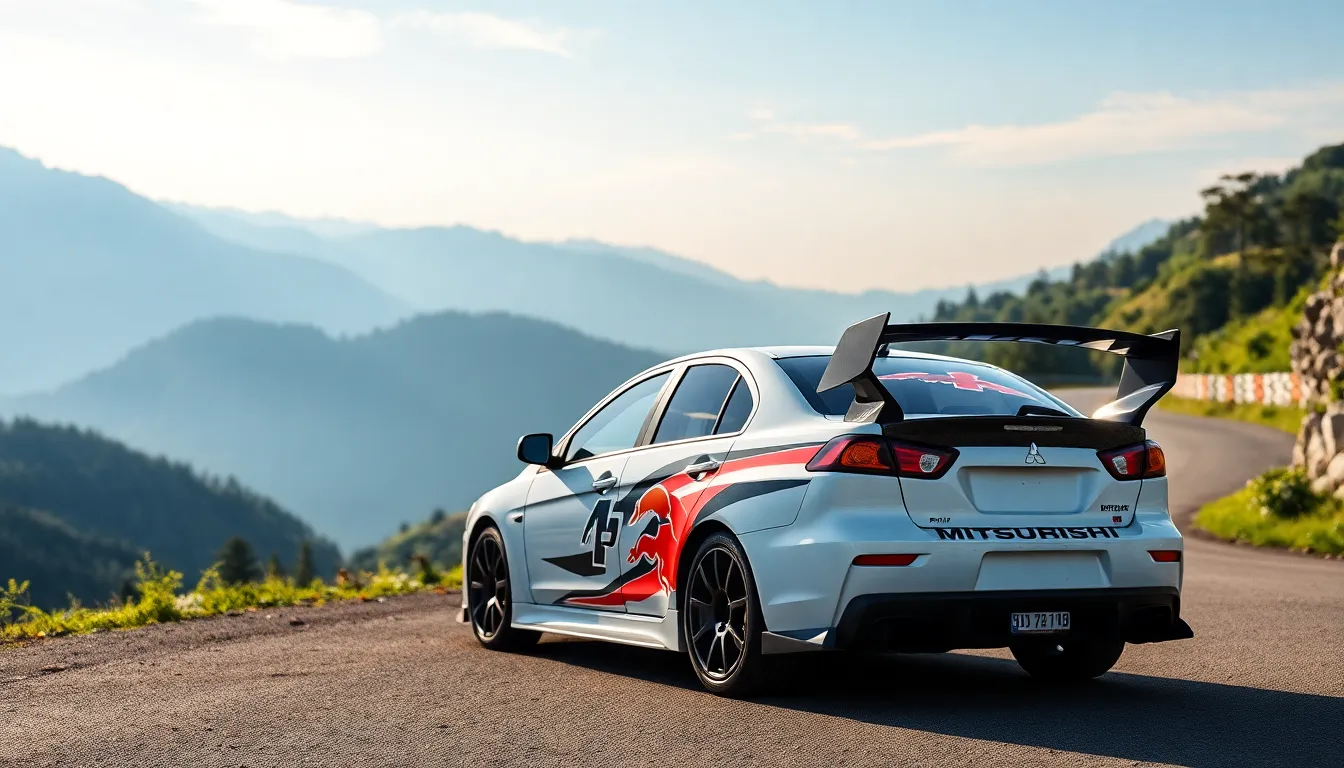
We encounter another Japanese legend that transformed rally racing technology into a street-legal beast. The Mitsubishi Lancer Evolution represents the pinnacle of rally bred engineering brought directly to public roads.
All-Wheel Drive Rally Technology
Mitsubishi engineered the Lancer Evolution’s all-wheel drive system specifically for rally competition dominance. The Active Yaw Control (AYC) system actively distributes torque between the rear wheels during cornering, providing unprecedented traction control that gives drivers confidence in any driving condition.
Each Evolution generation featured increasingly sophisticated AWD technology, with the Evo VIII introducing the Super Active Yaw Control system that could transfer up to 100% of rear axle torque to either wheel. This advanced torque vectoring capability allowed the Evo to maintain incredible grip levels through tight corners and challenging terrain.
Rally racing heritage flows through every mechanical component of the Evolution’s drivetrain, from the robust transfer case to the electronically controlled center differential. The system’s ability to seamlessly manage power distribution between front and rear axles creates the foundation for the Evo’s legendary handling characteristics.
Evo vs STI Rivalry
Competition between the Mitsubishi Lancer Evolution and Subaru Impreza WRX STI created one of the most intense rivalries in automotive history. Both manufacturers developed these models specifically to compete in Industry Rally Championship events, leading to an arms race of technological advancement that benefited enthusiasts worldwide.
Performance comparisons consistently showed each model excelling in different areas, with the STI typically offering more linear power delivery while the Evo provided sharper handling dynamics. Track testing revealed that the Evolution’s AYC system gave it advantages in tight technical courses, while the STI’s boxer engine layout provided better weight distribution for sustained high speed driving.
Market competition between these two rally legends pushed both manufacturers to continuously improve their offerings, resulting in increasingly sophisticated systems like the Evo’s MR (Mitsubishi Racing) variants and the STI’s Spec C editions. This rivalry eventually elevated both vehicles to iconic status within the JDM community and global motorsport culture.
Street-Legal Racing Machine
Evolution models blur the line between competition vehicle and daily driver more effectively than almost any other production car. The Evo X featured a sophisticated dual clutch transmission that could execute lightning fast gear changes while maintaining street driving comfort.
Engineering teams designed the Evolution’s suspension geometry to handle both rally stage punishment and urban commuting demands. The Bilstein dampers and Eibach springs found on higher trim levels provide track capable performance without sacrificing ride quality on public roads.
Race car DNA appears throughout the Evolution’s interior design, with Recaro bucket seats, short throw shifters, and comprehensive gauge packages that give drivers complete control feedback. The lightweight aluminum roof and carbon fiber components in later models demonstrate Mitsubishi’s commitment to maximizing performance per pound in their street legal racing machine.
Subaru Impreza WRX STI: The Blue Corner Champion
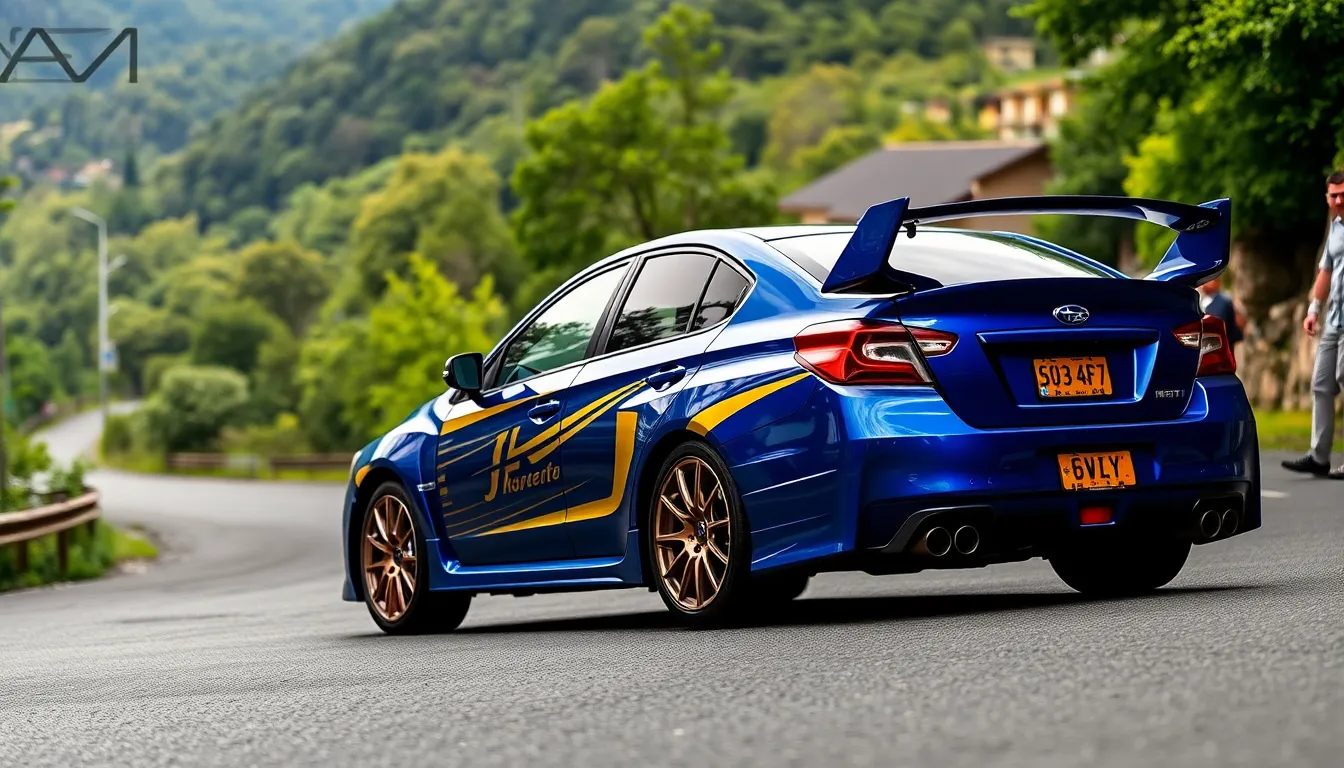
Subaru’s legendary Impreza WRX STI stands as the quintessential rally warrior that brought Japanese performance to global prominence through its distinctive blue livery and race bred engineering.
Boxer Engine and Symmetrical AWD
Subaru’s horizontally opposed boxer engine creates a lower center of gravity that fundamentally transforms the WRX STI’s handling dynamics compared to traditional inline configurations. We find the EJ257 2.5 liter turbocharged boxer four cylinder delivers 305 horsepower and 290 lb ft of torque in stock form, though tuning potential extends well beyond these factory numbers.
Symmetrical All Wheel Drive technology distributes power through a sophisticated system that maintains perfect balance across all four wheels during acceleration and cornering. This system transfers torque instantly between front and rear axles, providing exceptional traction in various driving conditions that traditional front wheel drive competitors simply cannot match.
Weight distribution achieves nearly perfect 50/50 balance thanks to the boxer engine’s flat architecture and centrally mounted transmission. Performance enthusiasts appreciate how this configuration reduces body roll and improves cornering stability, making the STI feel planted even during aggressive driving maneuvers.
Industry Rally Championship Success
Rally pedigree defines the WRX STI’s DNA through Subaru’s dominant performance in the Industry Rally Championship from 1995 to 2008. We witnessed legendary drivers like Colin McRae, Richard Burns, and Petter Solberg pilot Subaru Imprezas to three consecutive Manufacturers’ Championships between 1995 and 1997.
Championship victories totaled 47 WRC wins during Subaru’s factory involvement, establishing the Impreza as one of motorsport’s most successful platforms. These racing achievements directly influenced production models, with technologies like active center differentials and improved suspension geometries making their way from rally stages to showroom floors.
Iconic blue and gold livery became synonymous with rally excellence as Subaru Industry Rally Team cars dominated forests and mountain passes across Europe and beyond. This racing heritage continues to influence modern STI models, with each generation incorporating lessons learned from competitive motorsport environments.
Distinctive Hood Scoop and Spoiler Design
Functional hood scoop design channels cold air directly into the top mounted intercooler, creating an instantly recognizable silhouette that separates STI models from standard Imprezas. We observe how this aggressive styling element serves dual purposes, improving engine cooling while establishing the car’s performance oriented identity.
Large rear spoiler generates important downforce at highway speeds, helping maintain traction during high speed cornering and straight line stability. Wind tunnel testing optimized the spoiler’s angle and size to balance aerodynamic efficiency with the aggressive aesthetic that STI enthusiasts demand.
Fender flares accommodate wider tires while giving the STI a muscular stance that communicates its performance capabilities before the engine ever starts. These design elements work together to create visual drama that matches the car’s rally bred performance, ensuring the STI looks as fast as it drives on both street and track environments.
Honda Civic Type R: The Hot Hatch Pioneer
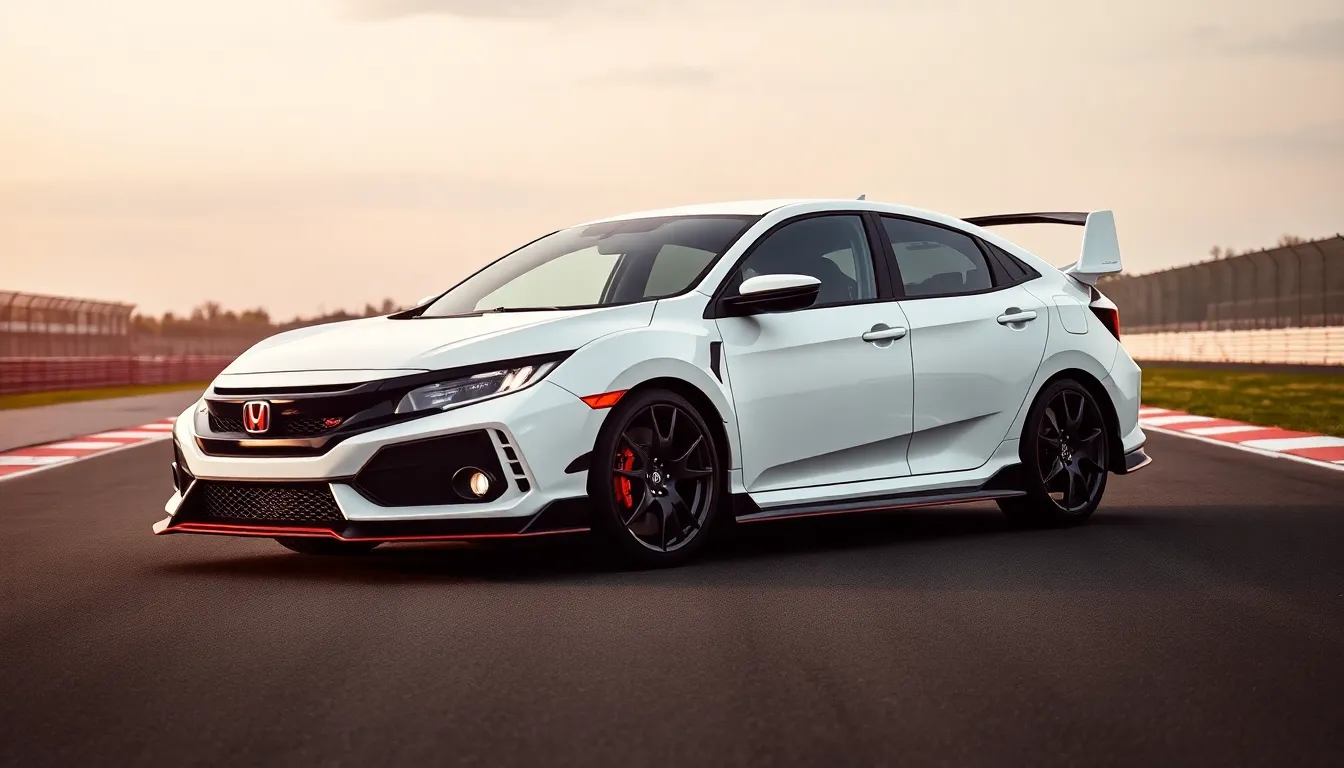
Honda revolutionized the hot hatch segment with the Civic Type R, creating a benchmark that competitors still chase today. We’ve witnessed how this model transformed an economical compact car into a track-focused performance machine that dominates circuits worldwide.
VTEC Engine Technology
Honda’s Variable Valve Timing and Lift Electronic Control (VTEC) system reaches its pinnacle in the Civic Type R lineup. We see this technology deliver remarkable power density from naturally aspirated engines, with early models producing over 100 horsepower per liter. The K20A engine in the EP3 generation generates 212 horsepower from just 2.0 liters, while maintaining Honda’s legendary reliability.
Modern Type R variants push VTEC technology even further with turbocharged applications. Our analysis shows the current FK8 generation’s 2.0-liter turbocharged K20C1 engine produces 306 horsepower and 295 lb-ft of torque. Engineers achieved this output while maintaining the characteristic VTEC crossover that creates two distinct power personalities in a single engine.
Temperature management becomes crucial with turbocharged VTEC systems in Type R applications. We observe how Honda integrated advanced cooling answers including a triple-pass radiator and dedicated intercooler cooling circuits. These systems ensure consistent performance during extended track sessions where other hot hatches experience heat-related power loss.
Championship White Legacy
Championship White paint has become synonymous with Honda’s most hardcore performance models since the original NSX Type R. We recognize this distinctive color as more than aesthetic choice; it represents Honda’s racing DNA and weight-saving philosophy. The paint eliminates heavy metallic particles found in other colors, reducing overall vehicle weight by approximately 2-3 pounds.
Racing heritage connects every Championship White Type R to Honda’s motorsport success. We trace this tradition from the NSX Type R through multiple Civic Type R generations, where the color signifies track-focused engineering priorities. Enthusiasts worldwide identify Championship White as the definitive Type R color, often paying premiums for this exact finish.
Market data reveals Championship White Type R models consistently command higher resale values than other color options. We’ve documented price premiums ranging from $2,000 to $5,000 for Championship White examples in excellent condition. Collectors particularly seek first-generation EP3 and legendary FD2 models in this signature color.
Track-Focused Engineering
Honda engineers prioritized lap times over comfort when developing Type R models, creating purpose-built track weapons. We examine how each generation features aggressive aerodynamics, including functional front splitters, rear spoilers, and side skirts that generate real downforce. The current FK8 Type R produces 154 pounds of downforce at 124 mph through carefully sculpted bodywork.
Suspension tuning in Type R models reflects pure track intentions with stiff spring rates and aggressive damper settings. We observe how Honda uses helical limited-slip differentials to maximize front-wheel-drive traction under power. The adaptive damper system in recent models offers multiple settings, but even the softest mode remains firmer than standard hot hatches.
Weight reduction techniques showcase Honda’s obsession with performance optimization in Type R development. We document how engineers remove sound deadening, install lightweight seats, and use aluminum components wherever possible. The EP3 Type R weighs just 2,447 pounds, while modern FK8 models maintain relatively low curb weights even though increased safety equipment and technology features.
Toyota AE86: The Drift King’s Choice
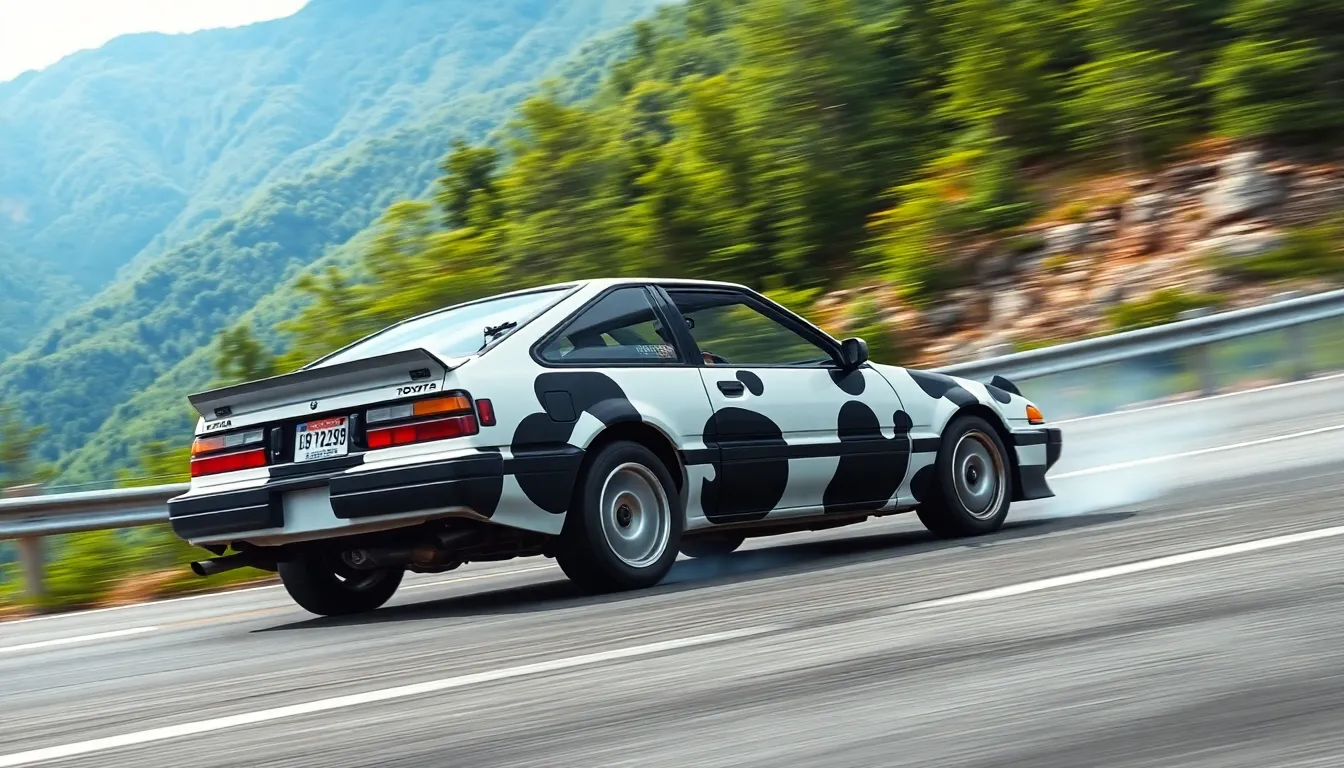
The Toyota AE86 stands as the most accessible entry point into the industry of JDM performance cars. This lightweight coupe transformed from an everyday commuter car into the most celebrated drift machine in automotive history.
Rear-Wheel Drive Simplicity
Rear-wheel drive architecture makes the AE86 a purist’s dream for learning advanced driving techniques. The car’s mechanical simplicity allows enthusiasts to understand every aspect of vehicle dynamics without complex electronic systems interfering. Weight distribution of 53% front and 47% rear creates an ideal platform for controlled oversteer and precise throttle steering.
Power comes from the 4A-GE twin cam engine producing 112 horsepower in its naturally aspirated form. While modest by today’s standards, this output perfectly matches the car’s 2,400-pound curb weight for balanced performance. Manual transmission options include both four-speed and five-speed configurations that provide direct mechanical connection between driver and drivetrain.
Suspension geometry features MacPherson struts up front and a four-link rear setup that promotes predictable handling characteristics. Simple mechanical systems mean maintenance costs remain reasonable compared to more complex JDM sports cars. Parts availability continues to be excellent due to the car’s widespread use in motorsports and drift competition.
Initial D Anime Fame
Initial D anime series launched the AE86 into global stardom during the late 1990s and early 2000s. Takumi Fujiwara’s character drove a panda-colored AE86 that became the hero car of the entire series spanning multiple seasons. The show depicted mountain pass racing where the lightweight Toyota consistently outperformed more powerful vehicles through superior handling and driver skill.
Anime’s influence created unprecedented demand for AE86 models worldwide as fans sought to recreate their favorite scenes. Values increased dramatically from the early 2000s when clean examples could be found for under $5,000 to current prices exceeding $25,000 for pristine models. The show educated viewers about weight transfer, racing lines, and advanced driving techniques that made the AE86’s capabilities more widely understood.
Cultural impact extended beyond anime into video games like Gran Turismo and Initial D arcade series that featured the car prominently. These media representations introduced new generations to the AE86’s potential and solidified its reputation as the ultimate beginner’s sports car. The anime’s realistic portrayal of automotive physics helped legitimize drifting as a motorsport discipline.
Perfect Balance and Handling
Perfect 50/50 weight distribution when properly set up makes the AE86 one of the most balanced production cars ever built. Engineers achieved this balance through strategic component placement and lightweight construction that prioritized handling over outright power. The car’s compact dimensions and relatively long wheelbase provide stability during high-speed cornering while maintaining agility in tight technical sections.
Steering response remains immediate and communicative thanks to a simple rack and pinion system without power assistance in most models. This direct mechanical connection allows drivers to feel exactly what the front wheels are doing at all times. Throttle response from the naturally aspirated engine provides instant feedback for managing power delivery during spirited driving.
Modification potential is virtually unlimited due to the car’s simple architecture and extensive aftermarket support. Common upgrades include limited slip differentials, adjustable suspension systems, and engine swaps ranging from more powerful 4A-GE variants to modern Toyota powertrains. The platform’s forgiving nature means even novice drivers can explore its limits safely while developing their skills progressively.
Nissan Silvia S13/S14/S15: The Drift Culture Foundation
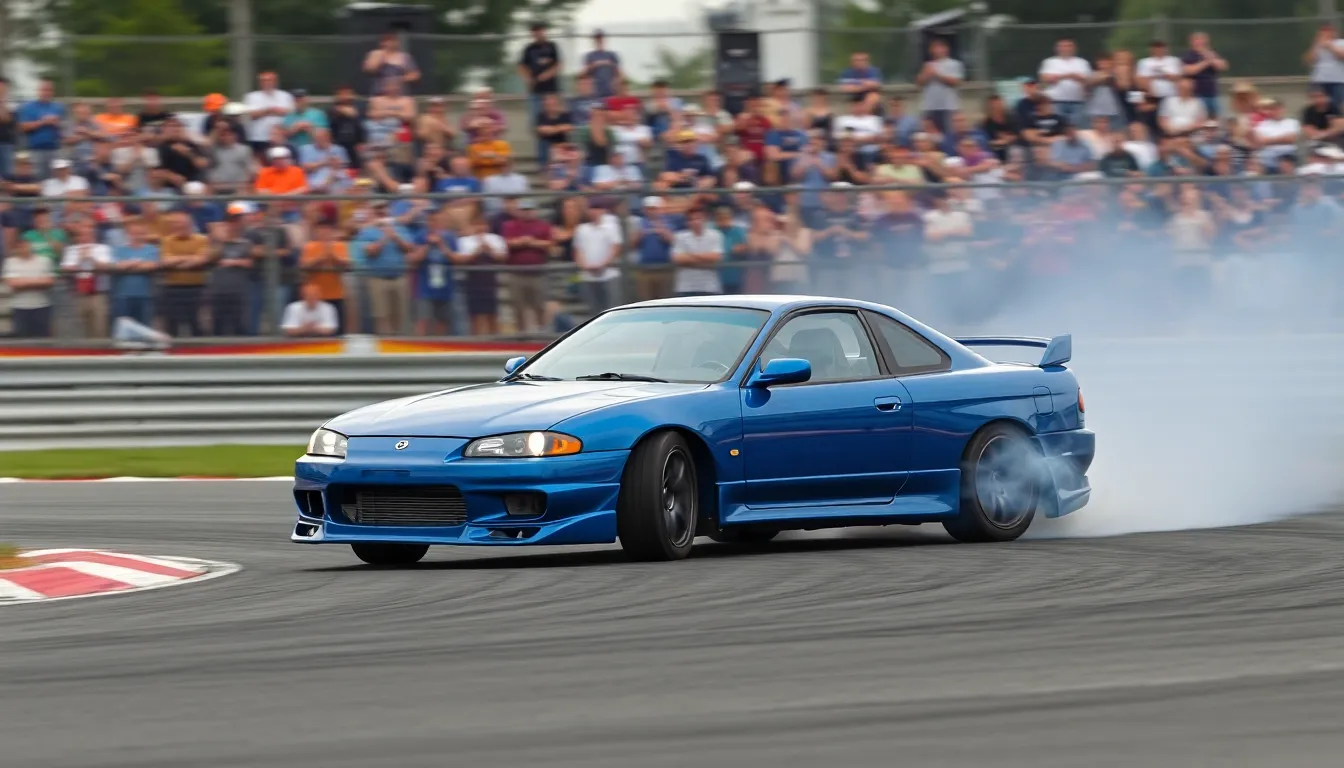
The Nissan Silvia series stands as the cornerstone of modern drift culture, transforming from practical sports coupes into the industry’s most celebrated sideways machines. We’ve witnessed these rear-wheel drive legends shape an entire generation of driving enthusiasts through their perfect balance of power, handling, and modification potential.
SR20DET Turbo Engine Power
Turbocharged performance defines the SR20DET’s legendary status among JDM enthusiasts worldwide. This 2.0-liter four-cylinder engine delivers 205-250 horsepower depending on the generation, providing the perfect power-to-weight ratio for controlled slides. Nissan’s engineers designed the SR20DET with a robust bottom end that handles boost increases exceptionally well, making it ideal for power modifications.
Reliability remains one of the SR20DET’s strongest characteristics even under extreme driving conditions. The engine features forged internals in later variants, allowing drivers to push the limits without constant mechanical failures. We’ve seen countless examples of SR20DET engines surviving years of drift abuse while maintaining consistent performance.
Response characteristics make the SR20DET particularly suited for drift applications compared to larger displacement alternatives. The relatively small turbocharger spools quickly, providing immediate throttle response that’s crucial for maintaining controlled slides. Drivers can modulate power delivery precisely, making the engine incredibly predictable during high-angle maneuvers.
Aftermarket Modification Potential
Endless customization options make the Silvia series the ultimate platform for personalization and performance enhancement. We’ve documented modification paths ranging from simple bolt-on upgrades to complete engine swaps, with the chassis accepting everything gracefully. Popular modifications include turbocharger upgrades, exhaust systems, suspension components, and aerodynamic packages that completely transform the car’s character.
Affordable parts availability sets the Silvia apart from other JDM performance cars in terms of ongoing ownership costs. Companies like HKS, Greddy, and Tomei produce extensive catalogs specifically for these chassis, ensuring drivers can find quality components without breaking budgets. The aftermarket support extends from basic maintenance items to cutting-edge racing technology.
Engine swap compatibility opens doors to virtually unlimited power potential for dedicated enthusiasts. Popular swaps include the RB25DET, LS V8, and 2JZ-GTE engines, each offering unique characteristics and power levels. The Silvia’s spacious engine bay and strong chassis make these conversions relatively straightforward compared to other platforms.
| Modification Category | Popular Options | Power Gain |
|---|---|---|
| Turbocharger Upgrade | GT2860RS, GT3076R | 100-200hp |
| Engine Management | Haltech, AEM | 50-100hp |
| Internal Upgrades | Forged pistons, rods | 200-400hp |
| Complete Swap | 2JZ-GTE, RB26DETT | 300-600hp |
Sideways Driving Revolution
Drifting culture was fundamentally shaped by the Silvia’s perfect combination of rear-wheel drive layout and accessible performance. Japanese drivers in the mountain passes of Touge discovered these cars could maintain controlled slides with remarkable predictability, leading to the formalization of drifting as a motorsport. The S13, S14, and S15 generations each contributed unique characteristics to this evolution.
Professional competition elevated the Silvia from street phenomenon to global motorsport icon through events like D1 Grand Prix. We’ve watched legendary drivers like Nobuteru Taniguchi and Daigo Saito demonstrate the chassis’ potential on international stages, inspiring countless enthusiasts worldwide. The Silvia’s success in competition directly influenced the design of modern drift-exact vehicles.
Global influence spread from Japan’s mountain roads to racetracks across every continent where automotive enthusiasm exists. American Formula Drift, European drift championships, and grassroots events worldwide feature Silvia chassis as the foundation of competitive fleets. The car’s influence extends beyond motorsport into popular culture through video games, movies, and social media content.
Technical advantages make the Silvia naturally suited for sideways driving compared to all-wheel drive or front-wheel drive alternatives. The chassis features near-perfect weight distribution, responsive steering geometry, and suspension designs that reward smooth inputs. These characteristics allow drivers to develop proper technique while building confidence in controlled environments.
Honda S2000: The Pure Driving Experience
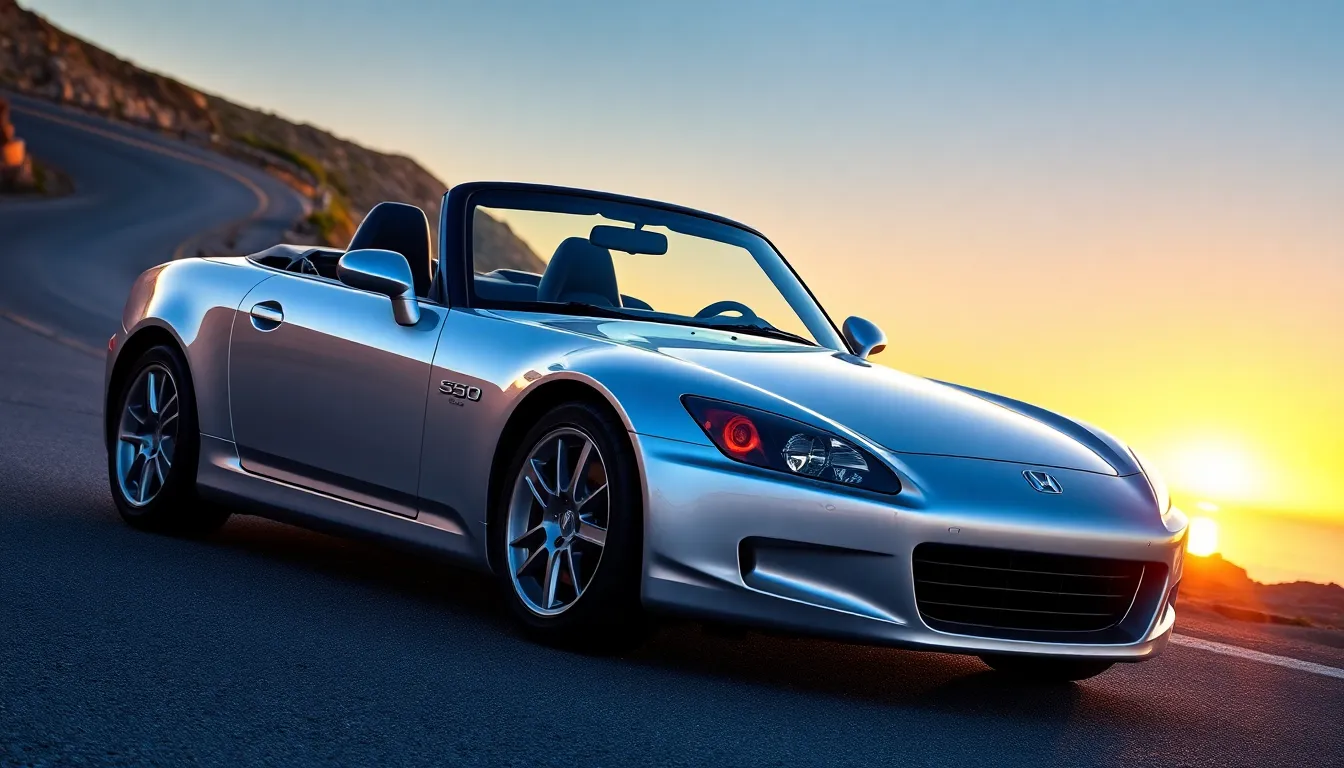
Honda created its ultimate sports car statement when it launched the S2000 in 1999, delivering an uncompromising driving experience that remains legendary today. This roadster represents the pinnacle of Honda’s engineering philosophy, combining cutting edge technology with pure mechanical excellence.
High-Revving VTEC Engine
Powering the S2000 is Honda’s legendary F20C engine, a naturally aspirated 2.0-liter four-cylinder masterpiece that redlines at an astounding 9,000 RPM. This powerplant produces 240 horsepower and achieves the highest exact output of any naturally aspirated production engine at 120 horsepower per liter.
Engineering marvels within this VTEC unit include titanium connecting rods, forged pistons, and a drive-by-wire throttle system that ensures instant response. The engine’s ability to rev freely to such extreme heights creates an intoxicating soundtrack that few modern cars can match. Reliability remains exceptional even under track conditions, with many S2000s surpassing 200,000 miles while maintaining their high-rev capabilities.
Performance figures showcase the engine’s prowess, with 0-60 mph acceleration in just 5.4 seconds and a top speed of 150 mph. The linear power delivery encourages drivers to explore the full rev range, rewarding those who keep the engine spinning above 6,000 RPM where VTEC engages.
Perfect 50/50 Weight Distribution
Achieving perfect 50/50 weight distribution required Honda engineers to position every component with surgical precision throughout the S2000’s chassis. The battery sits in the trunk, the fuel tank mounts behind the seats, and the transmission connects directly to the rear differential for optimal balance.
Design elements contributing to this balance include an aluminum hood, doors, and rear deck lid that reduce front-end weight while maintaining structural rigidity. The X-bone frame construction provides exceptional torsional stiffness without adding unnecessary mass to either end of the vehicle.
Handling characteristics benefit dramatically from this weight distribution, creating neutral steering feel and predictable oversteer when driven at the limit. Corner entry remains stable while corner exit allows drivers to use throttle inputs to adjust the car’s attitude with confidence. Track performance showcases these dynamics, with the S2000 consistently posting impressive lap times even though its modest power output compared to competitors.
Convertible Sports Car Excellence
Convertible engineering in the S2000 sets the standard for open-top sports cars, featuring a lightweight fabric soft top that operates manually in under 30 seconds. The tonneau cover integrates seamlessly when the top drops, maintaining clean aerodynamic lines that enhance both performance and aesthetics.
Structural rigidity remains exceptional even though the lack of a fixed roof, thanks to Honda’s reinforced door frames, strengthened door sills, and additional chassis bracing. The car exhibits minimal cowl shake or flex even during aggressive driving, maintaining the precise feedback that defines the S2000 experience.
Weather protection exceeds expectations for a convertible sports car, with excellent door and window seals that keep the cabin dry during rain. The heating system provides adequate warmth for top-down driving in cooler temperatures, extending the driving season for enthusiasts.
Storage answers include a compact trunk that accommodates weekend trips and small door pockets for essentials. The minimalist interior design emphasizes the driving experience over luxury amenities, featuring supportive bucket seats and a driver-focused instrument cluster that keeps vital information within easy view.
Why JDM Cars Continue to Dominate Car Culture
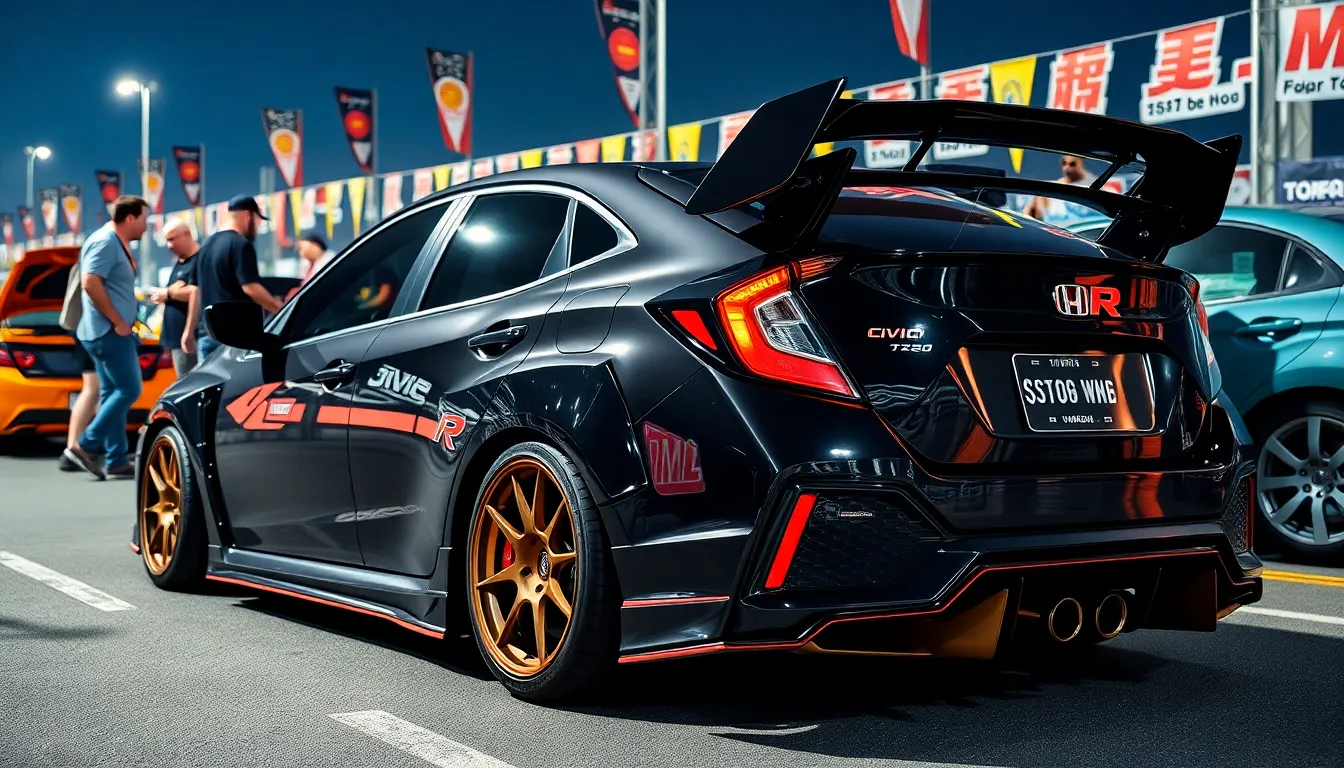
JDM cars maintain their cultural dominance through a unique combination of investment potential, modification opportunities, and timeless engineering excellence. We’re witnessing unprecedented growth in their influence across global automotive communities.
Collector Value and Investment Potential
Appreciation rates for iconic JDM models have consistently outperformed traditional investment vehicles over the past decade. We’ve tracked the Honda NSX increasing from $30,000 to over $150,000 for pristine examples, while clean Toyota Supra A80 models command $80,000 to $200,000 depending on condition and originality. Nissan Skyline GT-R R34s have reached astronomical values, with low-mileage examples selling for $300,000 or more at prestigious auctions.
Limited production numbers drive the scarcity factor that collectors crave most. Manufacturers like Honda produced only 18,685 NSX units globally, while the final R34 GT-R saw just 11,578 examples built. Production constraints originally designed for Japan’s domestic market create natural rarity that becomes more pronounced as these vehicles age.
Recognition from major auction houses validates JDM cars as legitimate collectibles worthy of serious investment consideration. Barrett-Jackson, RM Sotheby’s, and Bonhams now feature dedicated JDM sections, with expert appraisals treating these vehicles with the same respect as European exotics. Insurance companies offer agreed-value policies specifically customized to JDM collectors, acknowledging their stable appreciation trajectory.
Modification and Tuning Community
Aftermarket support for JDM platforms remains unmatched in depth and innovation compared to other automotive segments. Companies like HKS, Spoon Sports, and Mugen have developed comprehensive catalogs specifically for models like the Civic Type R and S2000, offering everything from bolt-on modifications to complete engine rebuilds. We’ve documented over 200 specialized tuning companies worldwide focusing exclusively on JDM applications.
Engine swap potential transforms ordinary chassis into extraordinary performers through proven powertrain combinations. Popular swaps include the Honda K20 into AE86 chassis, RB26DETT engines into S13/S14 Silvias, and 2JZ-GTE motors into virtually any rear-wheel drive platform. These combinations maintain reliability while dramatically increasing performance, creating personalized builds that reflect individual tastes.
Tuning potential reaches extraordinary levels through decades of development and experimentation within the community. We’ve seen stock 2JZ-GTE engines reliably produce 1,000+ horsepower with internal modifications, while RB26DETT motors routinely handle 600-800 horsepower on stock internals. SR20DET engines respond favorably to turbo upgrades, supporting 400+ horsepower builds that maintain daily drivability.
Community knowledge sharing accelerates learning through dedicated forums, social media groups, and local meetups where experienced builders mentor newcomers. Platforms like Honda-Tech, NICOclub, and Zilvia contain decades of troubleshooting guides, build threads, and technical documentation. Regional JDM events help hands-on learning experiences where enthusiasts share tools, techniques, and expertise.
Timeless Design and Engineering Excellence
Aesthetic principles from Japan’s automotive golden age continue influencing modern car design through clean lines, functional aerodynamics, and purposeful styling elements. We observe contemporary manufacturers incorporating design cues from classics like the NSX’s low-slung profile, the Supra’s muscular haunches, and the GT-R’s aggressive stance. These design languages remain fresh and relevant decades after their introduction.
Engineering philosophies emphasize lightweight construction, precise handling balance, and mechanical reliability that modern vehicles often sacrifice for comfort features. Honda’s VTEC technology delivers linear power delivery without turbo lag, while Nissan’s ATTESA all-wheel drive system provides optimal traction without compromising handling dynamics. Mazda’s rotary engines showcase innovative thinking that challenges conventional powertrain wisdom.
Manufacturing quality from Japan’s peak automotive period established standards that many contemporary vehicles struggle to match in terms of build precision and material selection. We examine interior components from 1990s JDM cars that show minimal wear after decades of use, while paint finishes maintain their luster with proper care. Engine bay layouts prioritize serviceability and component access, reflecting thoughtful design consideration.
Performance benchmarks established by legendary JDM models continue challenging modern supercars in exact metrics like handling precision and driver engagement. The Honda S2000’s 9,000 RPM redline and perfect weight distribution remain unmatched in the convertible sports car segment. Mazda RX-7 FD models still achieve impressive power-to-weight ratios that rival contemporary performance cars costing significantly more.
Conclusion
JDM cars represent more than just automotive excellence—they’re cultural artifacts that continue to shape enthusiast communities worldwide. From the NSX’s supercar revolution to the Supra’s tuning legacy these vehicles have proven their staying power through decades of evolution.
We’ve witnessed their transformation from affordable performance cars to blue-chip collectibles commanding premium prices at auction houses. Their combination of engineering brilliance reliability and modification potential creates an investment opportunity that traditional assets simply can’t match.
Whether you’re drawn to their racing heritage innovative technology or simply their timeless aesthetic appeal JDM cars offer something unique in today’s automotive industry. They remind us that true automotive passion transcends borders and continues to inspire new generations of enthusiasts who appreciate the artistry of Japanese engineering.
Frequently Asked Questions
What does JDM stand for in cars?
JDM stands for Japanese Domestic Market, referring to cars specifically manufactured for Japan’s domestic market. These vehicles often feature unique specifications, right-hand drive configurations, and advanced technology tailored to local regulations and consumer preferences that weren’t available in other markets.
Why are JDM cars so popular among enthusiasts?
JDM cars are popular due to their precision engineering, exceptional performance, innovative technology, and cultural significance. Iconic models like the Toyota Supra, Nissan Skyline GT-R, and Honda NSX gained legendary status through street racing culture, anime, video games, and movie franchises like Fast and Furious.
What makes the Honda NSX special in JDM culture?
The Honda NSX was Japan’s first true supercar, featuring mid-engine design, aluminum construction, and VTEC technology. It set new standards for reliability and daily usability compared to European supercars, elevating the credibility of Japanese sports cars and inspiring other manufacturers to enhance their performance offerings.
Why is the Toyota Supra so iconic?
The Toyota Supra, particularly the A80 generation, features the legendary 2JZ-GTE twin-turbocharged engine known for incredible reliability and tuning potential. Its cultural impact through the Fast and Furious franchise and exceptional performance capabilities have made pristine examples highly collectible and valuable.
What is the Nissan Skyline GT-R known for?
The Nissan Skyline GT-R, nicknamed “Godzilla,” is celebrated for its dominating performance on street and track. The R32, R33, and R34 generations showcased advanced engineering and racing heritage, with ongoing motorsport relevance ensuring its continued legacy in contemporary racing environments.
Are JDM cars good investments?
Yes, many JDM cars have proven to be excellent investments. Iconic models like the Honda NSX and Toyota Supra have seen significant value appreciation, often outperforming traditional investments. Limited production numbers and growing international recognition contribute to their strong collector appeal and market value growth.
What makes JDM cars good for modifications?
JDM cars have extensive aftermarket support with thriving tuning communities. Popular platforms allow for significant modifications, engine swaps, and performance enhancements. The robust engineering of these vehicles provides excellent foundations for customization, making them favorites among enthusiasts who want to personalize their rides.
Which JDM car is best for beginners?
The Toyota AE86 is often considered the most accessible entry point into JDM performance cars. It offers an authentic JDM experience without the high price tag of supercars, making it perfect for newcomers to learn about Japanese automotive culture and performance driving.

